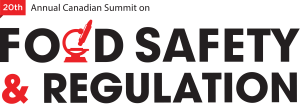Executive Summary:
In an era of unprecedented global complexity, the food industry faces challenges that traditional compliance models cannot adequately address. This whitepaper presents a revolutionary approach to food safety that transcends regulatory requirements, focusing on proactive, strategic transformation.
Introduction: The Evolving Landscape of Food Safety
The global food supply chain has become a intricate network of interconnected risks and opportunities. Recent geopolitical events, from pandemic disruptions to international conflicts, have exposed critical vulnerabilities in existing food safety frameworks. Our research reveals a stark reality: merely 46% of companies feel genuinely confident in their current compliance strategies, highlighting an urgent need for comprehensive reimagination.
Key Paradigm Shifts in Food Safety
1. From Reactive to Predictive Prevention
The traditional model of food safety has been fundamentally reactive—waiting for incidents to occur before responding. This approach is no longer viable in a rapidly changing global landscape. Predictive prevention represents a quantum leap in risk management, leveraging advanced technologies and sophisticated analytical frameworks to anticipate and mitigate potential threats before they materialize.
Key Elements:
– Proactive risk identification
– Predictive analytics
– Real-time vulnerability mapping
– Continuous monitoring systems
The shift requires organizations to develop sophisticated early warning systems, integrating multiple data sources and leveraging artificial intelligence to detect potential vulnerabilities with unprecedented precision.
2. Holistic Enterprise Risk Management
Food safety can no longer exist as an isolated function within organizational structures. It must be integrated as a strategic imperative that touches every aspect of business operations. This holistic approach demands unprecedented levels of cross-functional collaboration, strategic thinking, and executive engagement.
Strategic Components:
– Cross-functional collaboration
– Strategic risk assessment
– Financial impact modeling
– Executive-level engagement
By treating food safety as an enterprise-wide risk management strategy, organizations can transform potential vulnerabilities into opportunities for innovation and competitive differentiation.
Technological Enablers of Transformation
The technological landscape is rapidly evolving, providing unprecedented tools for food safety management. These emerging technologies are not merely supportive tools but fundamental transformative mechanisms that can revolutionize how we approach food integrity.
Emerging Technologies Driving Food Safety Innovation:
– Artificial Intelligence and Machine Learning
– Blockchain for supply chain transparency
– Advanced genomic tracing
– IoT-enabled real-time monitoring
– Quantum computing for complex risk modeling
Each technology represents a powerful instrument in creating more resilient, transparent, and responsive food safety ecosystems. AI, for instance, can analyze complex supply chain data in milliseconds, identifying potential risks that would take human analysts weeks or months to detect.
Strategic Implementation Framework
Transforming food safety strategies requires a meticulously designed, phased approach that acknowledges the complexity of organizational change and technological integration.
Comprehensive Food Safety Transformation Roadmap:
Phase 1: Assessment
The foundation of any transformative strategy is a brutally honest evaluation of current capabilities. This phase involves deep diagnostic work, mapping existing vulnerabilities, and establishing baseline performance metrics.
Key Activities:
– Conduct comprehensive gap analysis
– Map current vulnerabilities
– Develop baseline metrics
Phase 2: Strategic Design
With a clear understanding of current limitations, organizations can design a forward-looking strategy that integrates technological innovation, human expertise, and strategic vision.
Focus Areas:
– Create cross-functional prevention team
– Develop integrated risk management protocol
– Design technology integration strategy
Phase 3: Implementation
Successful implementation requires more than technological deployment—it demands a cultural transformation that embeds food safety principles into every organizational process.
Implementation Strategies:
– Pilot advanced monitoring systems
– Implement continuous training programs
– Establish dynamic compliance mechanisms
Critical Success Factors
Successful transformation is not just about technology or processes, but about creating a holistic ecosystem of innovation, learning, and continuous improvement.
Key Drivers:
– Leadership commitment
– Cultural transformation
– Continuous learning
– Technology investment
– Collaborative ecosystem development
Economic and Operational Benefits
Beyond risk mitigation, a transformative approach to food safety offers substantial strategic advantages. Organizations can expect improved operational efficiency, enhanced brand reputation, and potential financial benefits through reduced risk exposure.
Potential Advantages:
– Reduced risk exposure
– Enhanced brand reputation
– Improved operational efficiency
– Competitive differentiation
– Potential insurance and regulatory advantages
Conclusion:
The future of food safety lies not in compliance, but in strategic transformation. Organizations that view food safety as a dynamic, integrated strategic imperative will not only mitigate risks but create sustainable competitive advantages.
Recommendations:
1. Conduct immediate comprehensive risk assessment
2. Develop cross-functional transformation team
3. Invest in advanced monitoring technologies
4. Create continuous learning infrastructure
5. Establish dynamic compliance frameworks
Food safety is no longer about avoiding risks—it’s about creating value. Begin your transformation journey today.
This whitepaper is based on the Food Safety Summit presentation featuring John Spink, Director of the Food Fraud Prevention Academy at Michigan State University.


